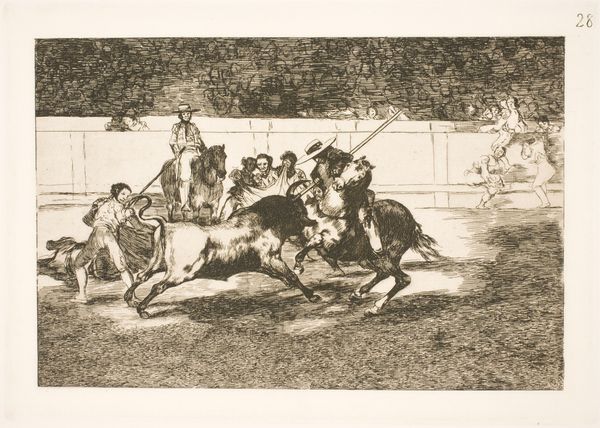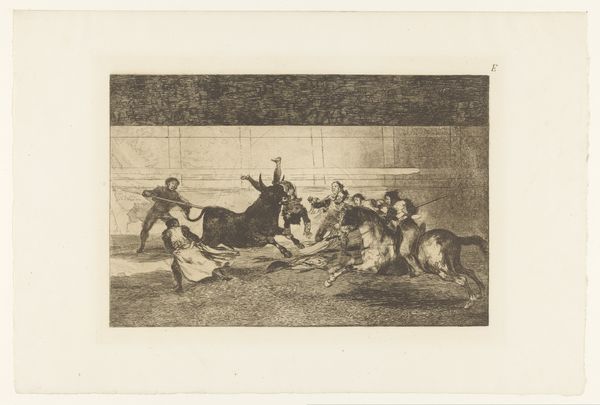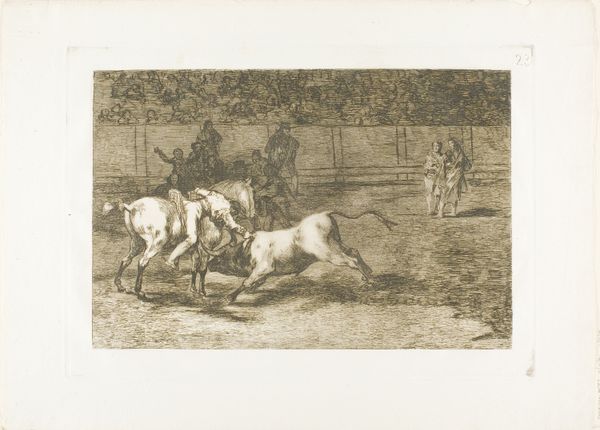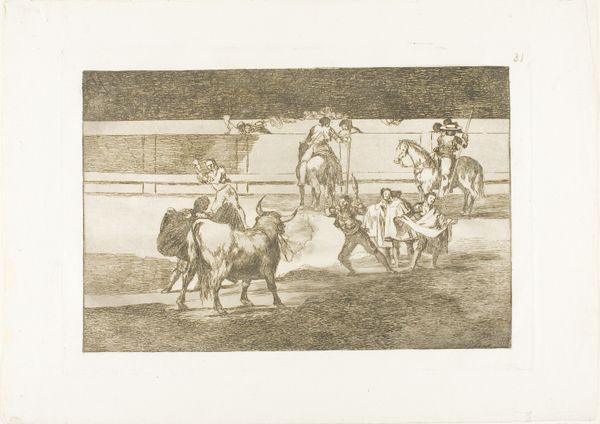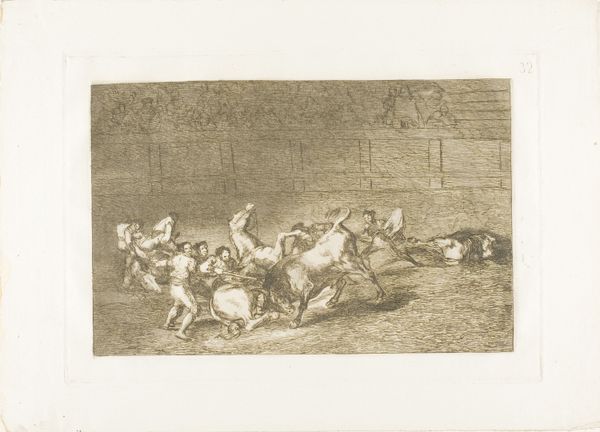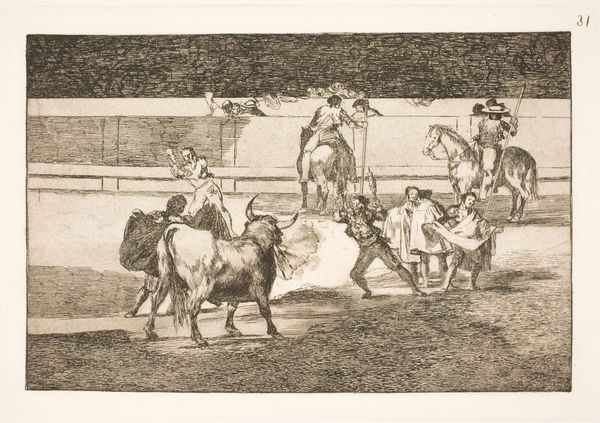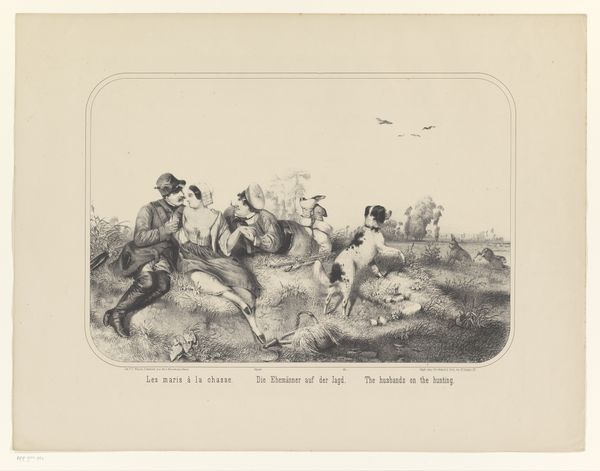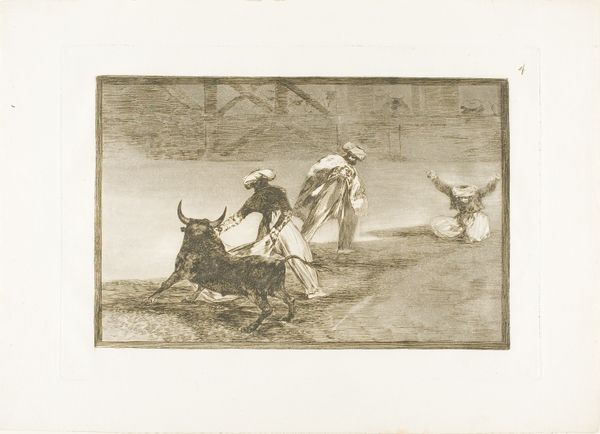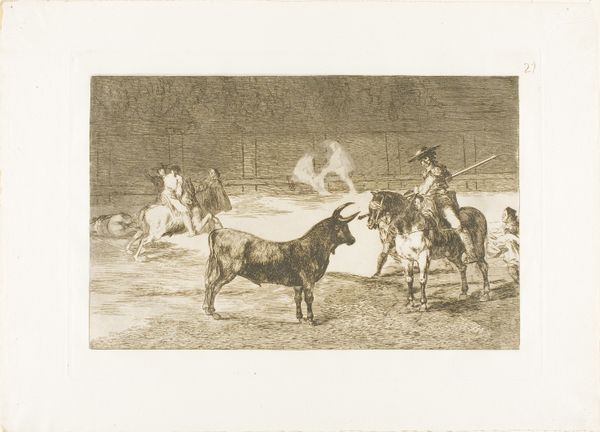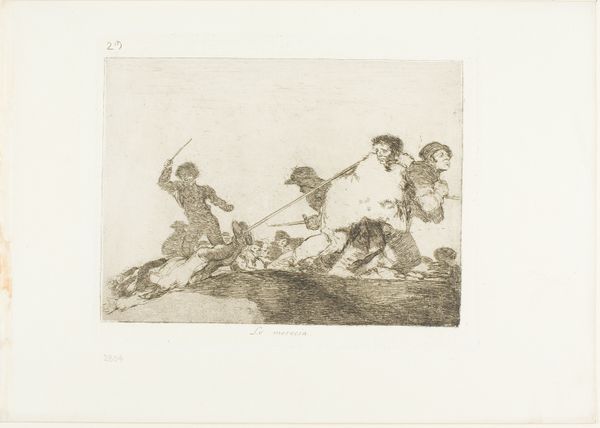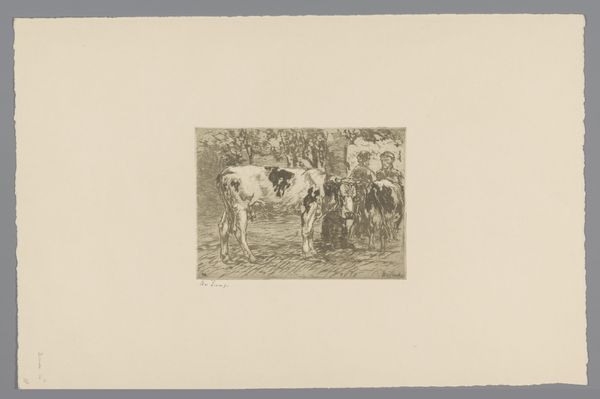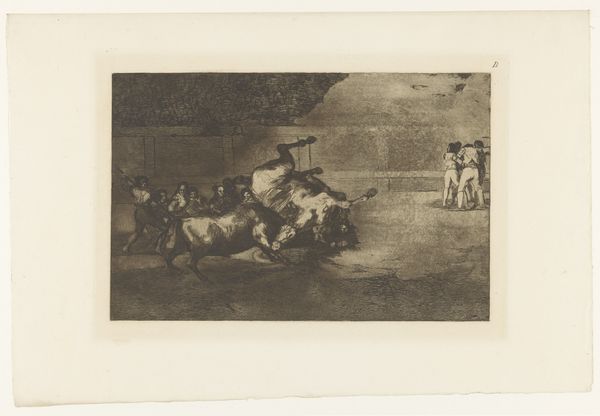
The Forceful Rendón Stabs a Bull with the Pique, from which Pass He Died in the Ring at Madrid, plate 28 from The Art of Bullfighting Possibly 1814 - 1816
0:00
0:00
drawing, print, etching, paper
#
drawing
# print
#
etching
#
paper
#
romanticism
#
genre-painting
#
history-painting
#
academic-art
Dimensions: 209 × 314 mm (image); 250 × 352 mm (plate); 320 × 445 mm (sheet)
Copyright: Public Domain
Editor: Here we have Goya's etching "The Forceful Rendón Stabs a Bull..." from *The Art of Bullfighting* series, likely made between 1814 and 1816. The frenetic energy practically leaps off the page, even in monochrome. What can you tell us about this work? Curator: Well, first, let's consider the materiality of printmaking at this time. Etchings like this were reproducible, and hence disseminated Goya’s perspective on bullfighting far and wide. These images become commodities in their own right, transforming the spectacle of the bullfight into a consumable image for the public. How does the act of reproducing such a violent scene impact its reception, do you think? Editor: It almost feels like it distances the viewer, making it a spectacle or a form of entertainment rather than a real tragedy. Do you think Goya was criticizing bullfighting, or celebrating it? Curator: I believe he does both. Consider the labor involved. Goya meticulously etched each plate. The labour of the matador, the bull, even the spectators—all are presented in stark contrast. Bullfighting’s glamor relies on the exploitation of both man and animal. What is he trying to convey through that contrast? Editor: So, it's not just about the spectacle itself, but about unpacking the complex social and economic forces that enable its creation and consumption. It feels like Goya wanted the public to critically think about bullfighting beyond the pure excitement and entertainment of it. Curator: Precisely. By highlighting the process and materials, we gain a richer understanding of the work's social and political context, and the economic forces driving cultural traditions. Editor: I never really considered the layers involved. It's amazing how shifting the focus from aesthetics to production can completely change the viewing experience. Thanks for that insight!
Comments
No comments
Be the first to comment and join the conversation on the ultimate creative platform.

